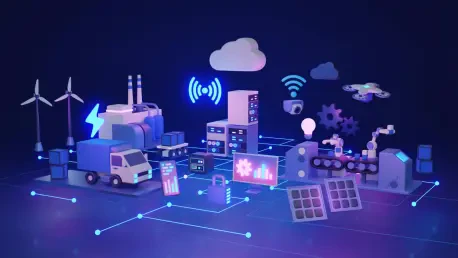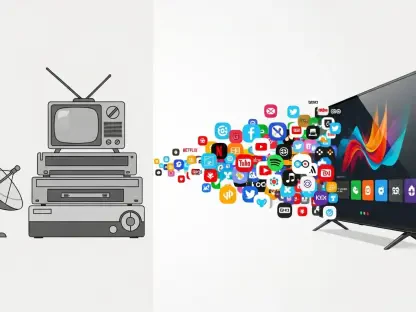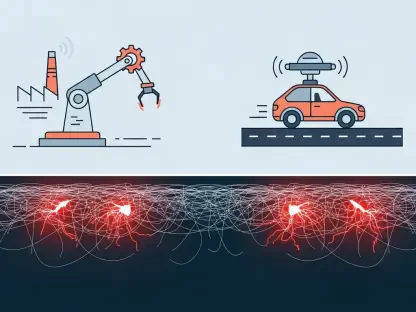In today’s digital age, IoT surfaces as both a marvel and a challenge, bustling with a tide of “forgotten things” that cease to function largely unnoticed. Vladislav Zaimov, an expert in telecommunications with in-depth experience in enterprise systems and risk management, provides insight into the vulnerabilities and potential of IoT, especially in the context of the Global South. As Vladislav points out, it’s not just about connecting devices but also ensuring their longevity and relevance in an ever-evolving tech landscape.
What do you mean by “the internet of forgotten things”?
The “internet of forgotten things” refers to IoT devices that, once celebrated for innovation, gradually fall out of the limelight and into obsolescence. These devices become overlooked even while continuing to exist physically. With firmware expiring or companies going out of business, these devices lose functionality and significance, leading to wasted potential and increased security risks.
Can you explain the significance of IoT devices suddenly stopping, particularly due to issues like firmware expiry?
The halting of IoT devices often comes without warning but with significant consequences. Firmware expiry can render devices useless, leaving data inadequately handled and increasing vulnerabilities in network security. It’s not just a technical concern but also affects operational continuity and reliability, forming blind spots within the digital ecosystem.
How does IoT device abandonment particularly affect the Global South?
In the Global South, where economic resources and infrastructure support are sparse, abandoned IoT devices are more than just nuisances—they represent failed investments and promises unfulfilled. With connectivity often sporadic, these abandoned tools not only hinder potential advancements but also widen disparities in technological access and benefits.
What are the consequences of having IoT devices that are unsupported and unsecured?
Unsupported and unsecured IoT devices are ticking time bombs for networks, potentially serving as entry points for cyberattacks. They accumulate as technical debt, often ignored until they cause significant disruptions. These abandoned devices can compromise security, leak sensitive data, and prevent systems from functioning efficiently.
How did Sigfox’s receivership impact IoT users in Africa, Asia, and Latin America?
Sigfox’s receivership had a whirlwind effect on IoT users across these regions. Companies and governments relying on its networks for low-cost, vast connectivity solutions were suddenly left in a lurch. Devices became inconsistent in their operations with no service support, forcing users to hastily search for alternative solutions or, worse, abandon their previous IoT investments.
Why is the shelf life of IoT devices a concern for infrastructure and investment?
IoT devices with short life spans undermine infrastructure reliability and strain investments. When devices die prematurely, companies face mounting costs and operational hiccups that erode trust and deterrent future investment. It is vital for devices to offer longevity and sustained support to foster informed, confident investments in robust digital solutions.
How did the failure of smart water meters in Kenya highlight the issues surrounding IoT device support?
The smart water meters in Kenya, initially intended to provide equitable water access, were thwarted by a lack of vendor support and inadequate local technical expertise. The absence of necessary firmware updates and diagnostic tools made the devices ineffective, highlighting how vendor dependency and a lack of local support infrastructure can cripple IoT deployment.
What steps did Semtech take with its LoRa-based systems to ensure longer-lasting IoT deployments in India and Brazil?
Semtech adopted a model focusing on open standards and local integration. By fostering collaboration with local engineers and deploying flexible network designs independent of remote cloud platforms, they ensured the deployments were sustainable and serviceable within their environments, fostering longevity and reliability.
Why is maintainability so crucial for IoT infrastructure, especially in markets with scarce resources?
In markets with limited resources, maintainability is pivotal as it represents the difference between a solution that empowers and one that hinders. Limited financial and human resources necessitate infrastructure that is dependable and easy to maintain. Otherwise, the initial investment quickly turns into a liability.
Could you explain the economic fallacy of choosing short-lived IoT devices over more expensive, durable options?
The apparent initial cost savings of cheaper IoT devices often turn out to be misleading once maintenance, replacement, and operational downtimes are accounted for. While a short-lived device might seem economical at face value, it’s prone to premature failure and the costs associated with fixing resulting complications far outweigh the savings compared to purchasing robust, long-lasting devices initially.
How does failed real-time visibility in logistics, like in cold chain logistics, financially impact businesses?
In logistics, especially sectors like cold chain logistics, timely data is crucial to maintain product integrity. Real-time visibility failures can lead to undetected spoilage, stock losses, and ultimately reputational damage. These factors cripple financial performance by prompting rejected shipments and necessitating refunds or compensation.
Can you expand on the concept of “digital neo-colonialism” as it relates to IoT devices imported to the Global South?
“Digital neo-colonialism” describes the technology dynamics where powerful economies influence and control less dominant ones through technology imports. In IoT, this often translates to scenarios where imported devices are closed systems. They demand trust and infrastructure that locals cannot evaluate or alter, limiting technological autonomy and self-reliance.
What opportunity does Europe have in reshaping the IoT model with its regulatory push toward right-to-repair and secure-by-design mandates?
Europe stands at a crossroads to redefine IoT practices by establishing frameworks that prioritize sustainability, repairability, and security. By supporting initiatives like right-to-repair and secure-by-design, Europe can advance IoT infrastructure that is inclusive, environmentally considerate, and adaptable to diverse global needs, championing devices that last longer and serve wider purposes.
How can IoT systems be more context-aware and suitable for diverse environments?
By designing IoT systems with modular, adaptable architectures catering to specific local conditions—like energy variability or exposure to harsh weather—IoT solutions can offer pertinent and sustainable performance. Additionally, engaging local engineers in the design and deployment phases ensures the technology understands and meets practical everyday needs.
What role do you think the EU should play in promoting durable and open IoT infrastructure?
The EU can lead by encouraging and investing in open, durable IoT infrastructures through policy and funding. By promoting transparency, interoperability, and long-term service commitments, the EU can inspire global markets to pivot towards more resilient IoT ecosystems that transcend mere commercial gains and focus on extended socio-economic benefits.
How does the current pace of technological development, like AI and 5G, impact the longevity and reliability of IoT devices?
The rapid advancement in technologies like AI and 5G puts pressure on IoT devices to constantly evolve, often outpacing device capabilities and lifespans. While this fosters innovation, it also necessitates frequent updates and replacements, which can discourage investment in sustainable technology but might be counterbalanced by thoughtful design accommodating future capabilities.
What potential cybersecurity risks are associated with neglected IoT devices?
Neglected IoT devices pose significant cybersecurity risks as they may harbor outdated software vulnerable to exploitation. They are attractive targets for cybercriminals to infiltrate networks, execute attacks, or siphon sensitive data, compounding both personal and systemic vulnerabilities inherent to digital infrastructure.
How can consumers and businesses be more proactive in ensuring their IoT devices remain functional and secure?
Consumers and businesses should establish routine maintenance checks and ensure firmware updates are applied on time. Educating users on the lifespan and support framework of devices during purchase decisions can aid in selecting longer-lasting solutions. Implementing robust cybersecurity protocols also helps mitigate risks from neglected or outdated devices.
What are your thoughts on the future of IoT, and how can we prevent it from becoming an “Internet of Forgotten Things”?
The future of IoT hinges on its ability to balance innovation with sustainability. Fostering open ecosystems, promoting standards for repairability, and educating stakeholders on the importance of support and security can ensure these devices remain vital and functional, avoiding the pitfalls of obsolescence that many devices currently face.
Do you have any advice for our readers?
My advice would be to stay informed about the lifecycles and support commitments of any IoT solutions you choose to implement. Prioritize scalability and adaptability over immediate low-cost options. It’s crucial to consider the total cost of ownership, which includes maintainability and longevity, not just the initial purchase price. Investing in durable, context-aware infrastructure today can guard against becoming another thread in the web of forgotten things.









